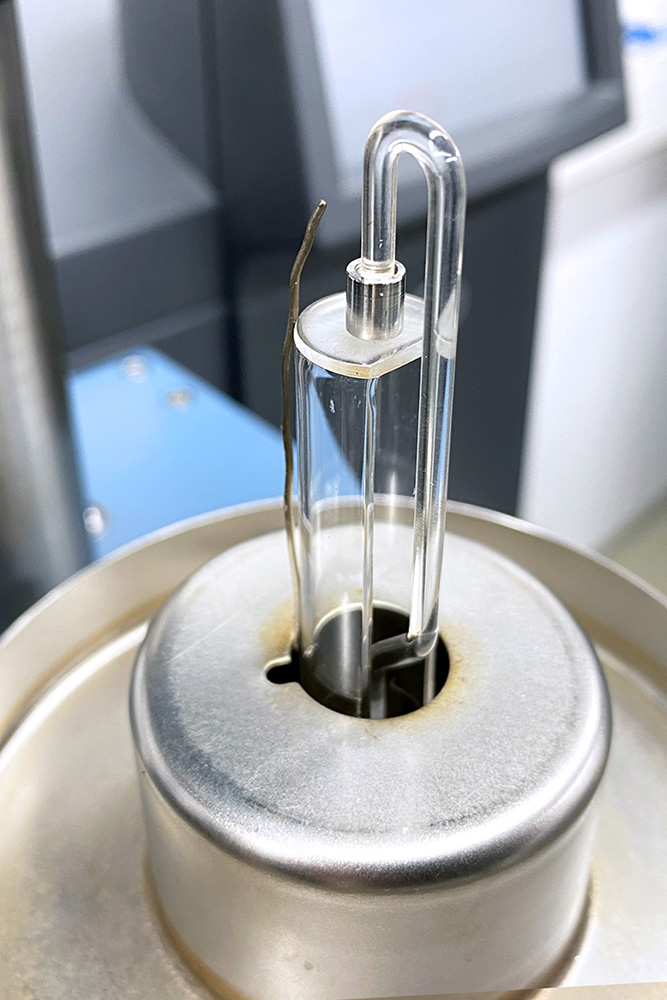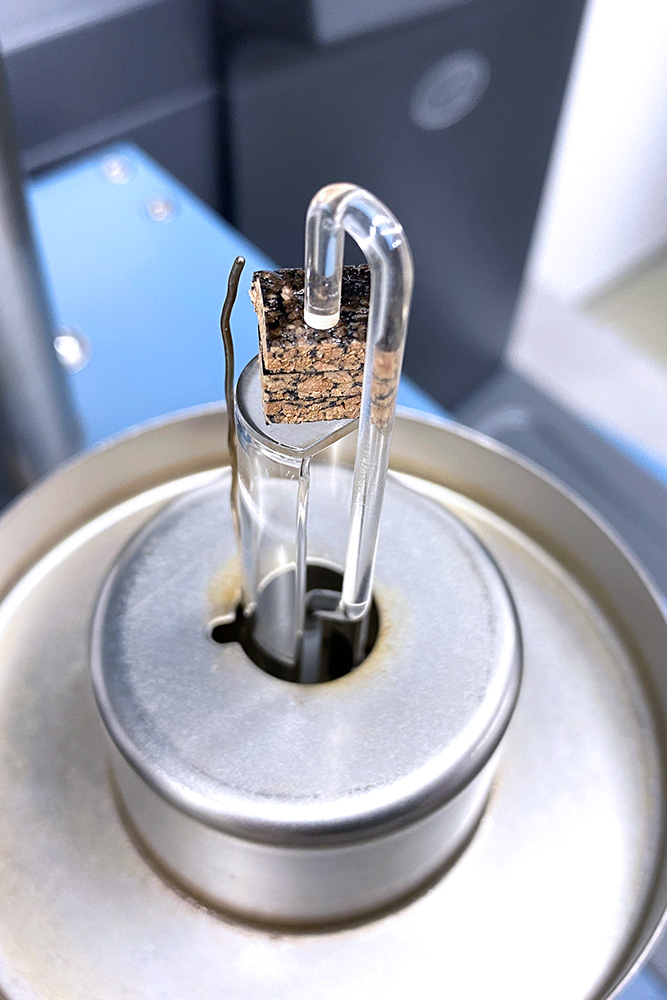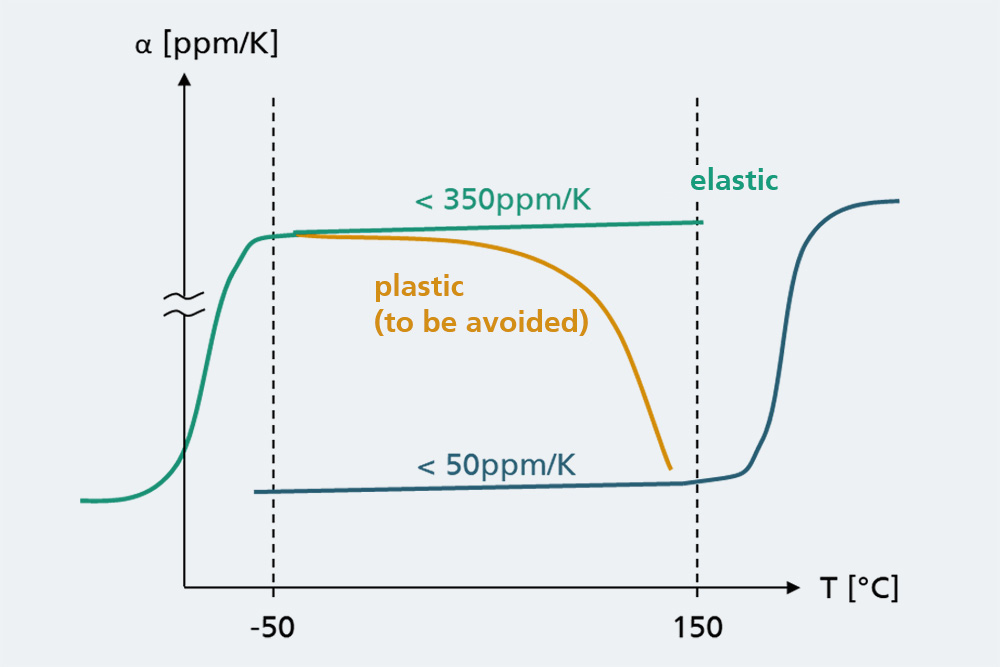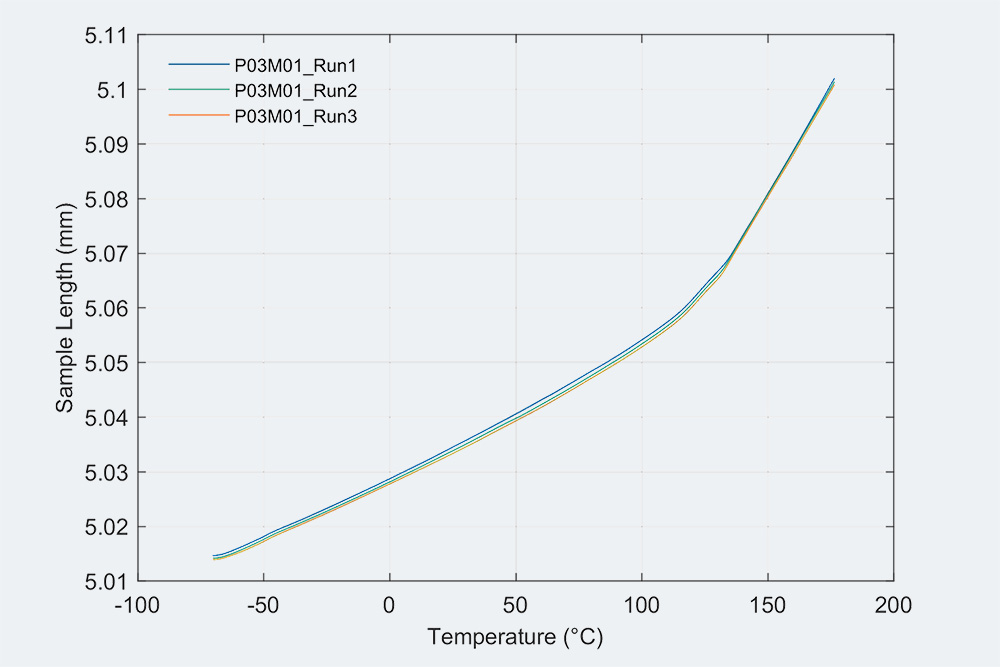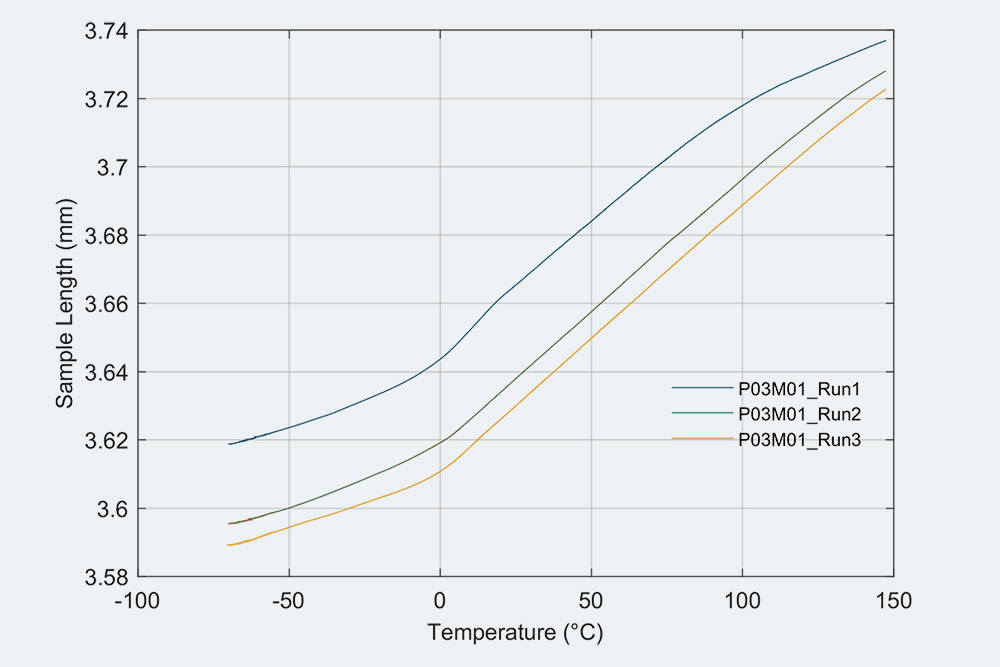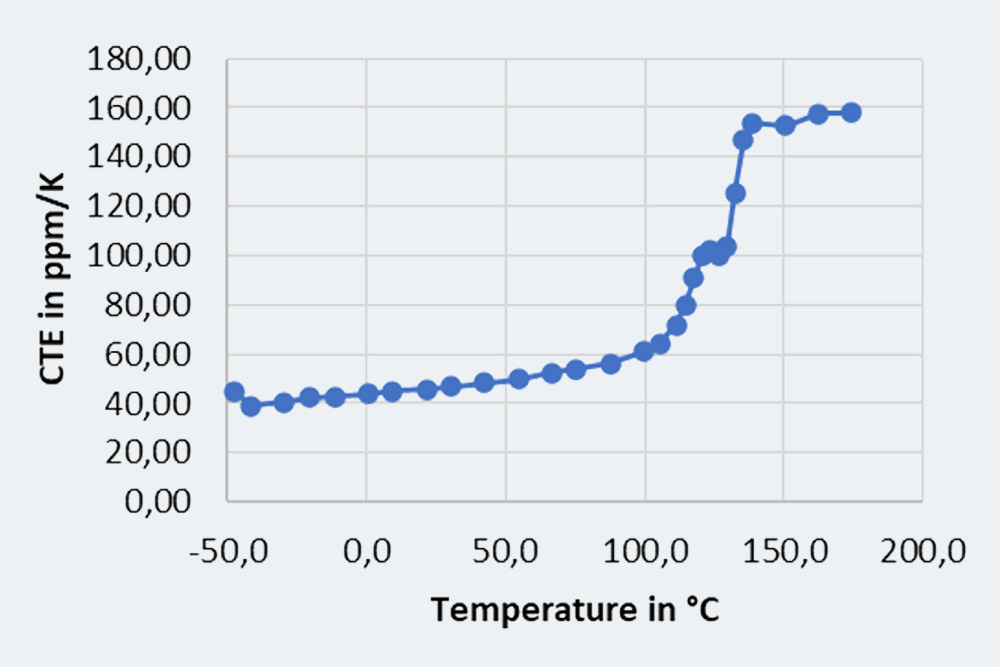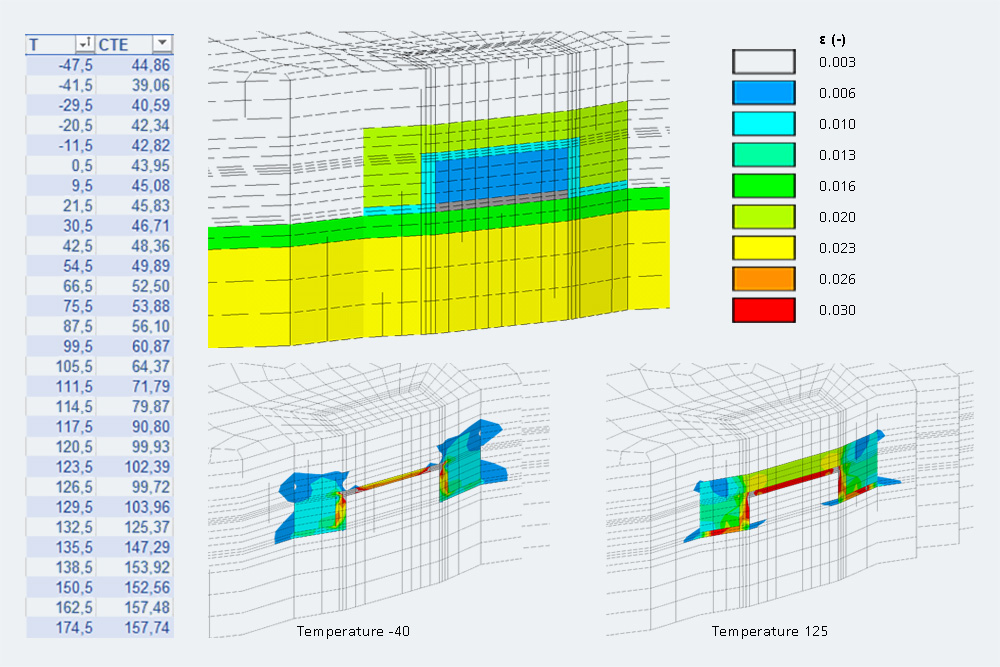Another important material property is the coefficient of thermal expansion (CTE). The behavior of this value in terms of expansion when the temperature changes play an important role in the design of materials combination and composition. Strong differences in the coefficients of two bonded structures and weak cohesive and adhesive forces of the joining partners, can lead to damage in the form of cracks and delamination, even if small temperature increases.
Thermo-mechanical analysis (TMA) is used to measure the thermal expansion of polymeric, metallic or ceramic materials under temperature changes and allows to calculate the resulting CTE over a temperature range.

